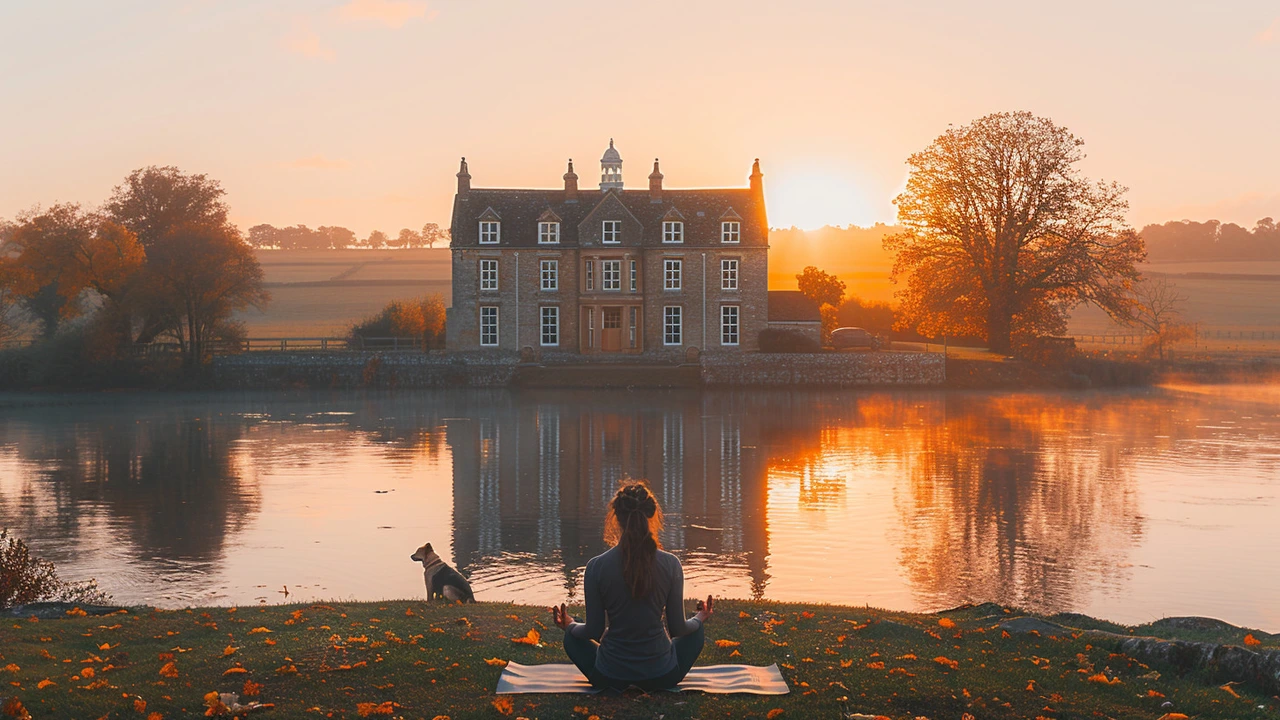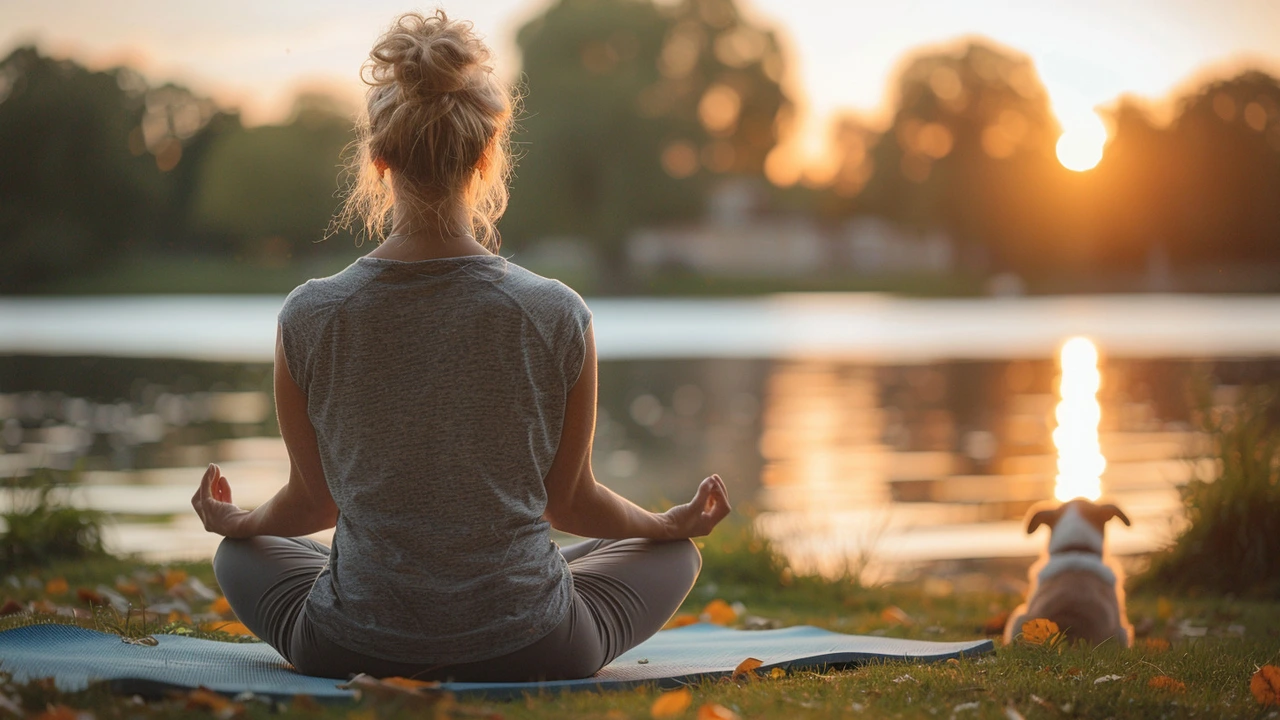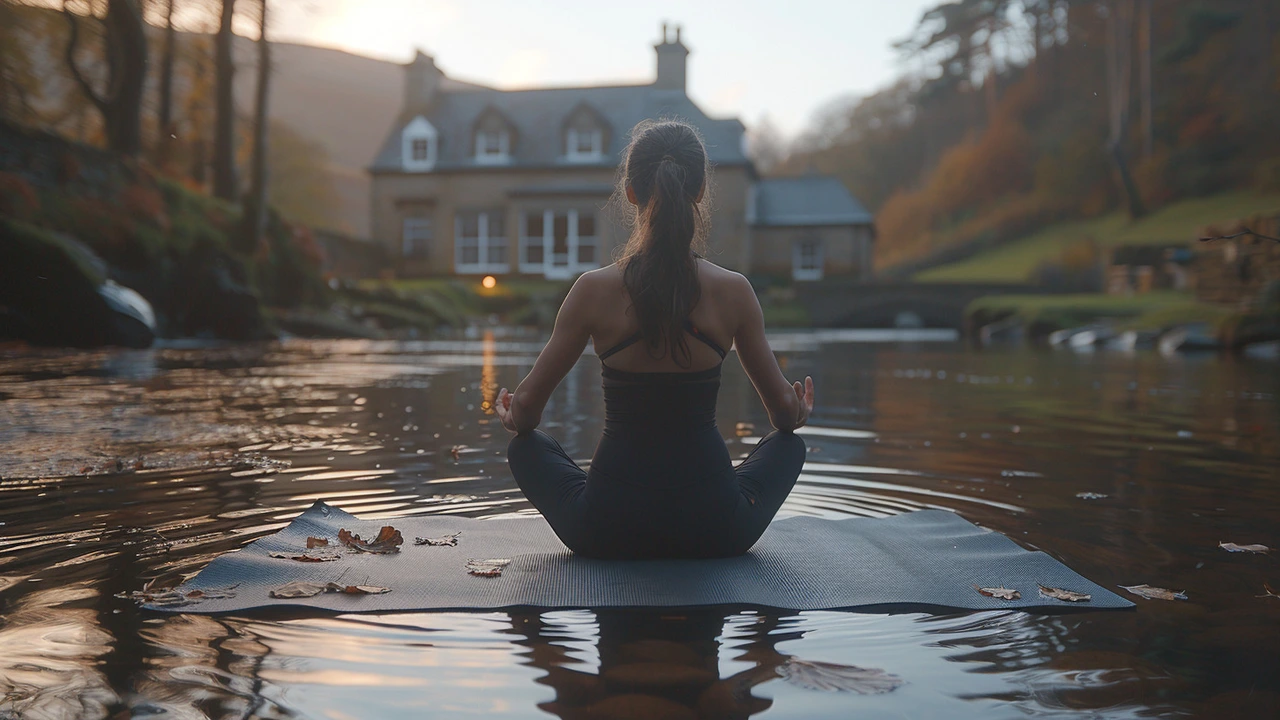In a world filled with constant demands and unexpected challenges, maintaining mental balance can often seem like chasing a mirage. Two qualities that play a pivotal role in this balancing act are calmness and resilience. These traits might seem like distant cousins, but they share a deep, symbiotic relationship that can help you navigate through tough times with grace.
When you understand what calmness truly is, it becomes easier to see its power. It’s more than just a lack of anxiety; it’s a state of mind that lets you handle stressors without getting overwhelmed. On the other hand, resilience is your ability to bounce back from setbacks, to stay strong and recover from adversities.
The interaction between calmness and resilience is fascinating. Staying calm can make you more resilient and vice versa. For instance, a calm mind is better equipped to devise solutions during a crisis, which strengthens resilience. Similarly, experiencing and overcoming difficulties can bolster inner peace.
Practicing both calmness and resilience doesn't require drastic life changes. Simple steps like mindfulness, regular physical activity, and setting achievable goals can significantly impact your mental health. Building these habits can set you on a path toward a more balanced, fulfilling life.
- Understanding Calmness
- Building Resilience
- The Connection Between Calmness and Resilience
- Practical Tips for Cultivating Both
Understanding Calmness
Calmness is often misunderstood as a passive state or simply the absence of stress. However, it is an active, dynamic quality that can transform your response to life's myriad challenges. At its core, calmness is the ability to remain stable and composed regardless of external circumstances. It is a practiced state of mental serenity that can provide a clear headspace to make sound decisions.
Interestingly, calmness involves both the mind and body. Psychologically, it is about controlling your emotions and avoiding overreactions. Physiologically, it can slow your heart rate and decrease blood pressure, creating a calming effect throughout your entire body. Scientific studies have shown that practicing calmness can even alter brain waves, shifting them towards patterns associated with relaxation and mindfulness.
One significant aspect of calmness is its impact on the prefrontal cortex, the part of the brain responsible for decision-making and emotional regulation. When you are calm, this region operates more effectively, allowing for better problem-solving and less impulsive behavior. Regular practices such as meditation, deep-breathing exercises, and yoga can enhance this state, making it easier to achieve in moments of stress.
"Calm mind brings inner strength and self-confidence, so that’s very important for good health." — Dalai Lama
To understand and harness calmness, it is helpful to recognize its triggers and inhibitors. Stress, anxiety, and fatigue are common barriers that can disrupt your calm state. Identifying these triggers allows you to anticipate and mitigate their effects. For instance, if you know that tight deadlines make you anxious, you can practice time management strategies to reduce last-minute stress.
Calmness also involves a level of self-awareness and acceptance. It requires acknowledging your feelings without letting them control your actions. This state can be nurtured through mindfulness practices that teach you to observe your thoughts and feelings from a distance, reducing their immediate impact. Such practices are rooted in ancient traditions but have been supported by modern science for their effectiveness in promoting mental health.
Developing calmness is not an overnight task; it requires consistent effort and patience. Start by incorporating small habits into your daily routine that promote relaxation. Even a few minutes of quiet reflection each day can make a significant difference over time. The key is persistence and the willingness to prioritize your mental well-being.
One useful method is to create a calm environment. This can be as simple as keeping your living space organized or surrounding yourself with soothing colors and sounds. Sensory experiences play a huge role in maintaining calmness. The scent of lavender, for example, has been shown to reduce anxiety and promote relaxation. Similarly, soft, ambient music can help set a serene atmosphere.
Ultimately, calmness is about balance. It is about maintaining an inner equilibrium despite external chaos. By cultivating this quality, you equip yourself with a powerful tool to counteract the stresses and strains of everyday life. The journey to mastering calmness is a personal one, but its benefits extend far beyond the individual, influencing every aspect of your interaction with the world.

Building Resilience
Resilience is the mental reservoir that allows you to adapt to stress and adversity. It’s not about being immune to hardships but having the capability to recover from them. Resilience can come from both personal skills and external supports. Developing this trait helps create a more robust mental framework, which is essential in facing life's inevitable setbacks.
One practical way to start building resilience is by nurturing a growth mindset. Embrace challenges as opportunities to learn. Viewing failures not as dead ends but as stepping stones can dramatically change how you rebound from difficulties. Carol Dweck, a renowned psychologist, found that individuals with a growth mindset are more resilient because they see effort as a path to mastery.
Another component of resilience is cultivating strong social connections. Social support from friends, family, and community provides both emotional comfort and practical assistance during tough times. According to research at the American Psychological Association, people who feel connected to others are more likely to have higher levels of happiness and less stress. Building and maintaining these relationships are key to enhancing resilience.
“Resilience is not about avoiding stress but learning how to thrive within it.” — Harvard Business Review
Mindfulness and meditation can also significantly build resilience. These practices foster a state of awareness and presence, which helps in managing stress more effectively. Regular meditation has been shown to increase gray matter in the brain, which is involved in muscle control and sensory perception such as seeing and hearing, as well as emotions, memory, and speech. Studies indicate that mindfulness can lead to greater self-awareness and emotional regulation.
Physical well-being plays a role too. Regular exercise boosts your body's production of endorphins, lifting your mood and creating a sense of well-being. A study by the Mayo Clinic suggests that exercise can help you sleep better and reduce stress, both of which are crucial elements for building resilience. Having a healthy body supports a healthy mind, making it easier to tackle adversities.
Setting realistic goals and making small, incremental changes can fortify resilience over time. By breaking down large challenges into manageable tasks, the feeling of being overwhelmed diminishes. This method not only makes goals more attainable but also provides a sense of accomplishment that fuels further resilience. Keeping a journal to track your progress and reflect on experiences can offer insights and reinforce a resilient mindset.

The Connection Between Calmness and Resilience
It’s essential to see how calmness and resilience intertwine to help us manage life’s challenges. Picture a scenario where you need to handle a stressful work project. If you stay calm, you can make rational decisions instead of panicking. This calm thought process allows you to tackle the project efficiently, showcasing your resilience.
Research by the American Psychological Association has shown that maintaining a calm demeanor under stress helps prevent the body’s fight-or-flight response from affecting decision-making. This control prevents burnout and ensures that individuals remain productive and mentally stable. Moreover, resilience benefits from calmness because a calm approach to problem-solving reveals solutions that might not be apparent in a panic state.
Mindfulness practices, for instance, are proven techniques that aid in fostering both qualities. Mindfulness allows you to stay present and composed in the moment, reducing stress levels. This presence aids in emotional regulation, which is pivotal when facing setbacks, thus promoting resilience.
Think of calmness as the seed from which resilience grows. The ability to remain serene in difficult situations gives you the strength to endure and overcome. A study from the University of California, Berkeley, outlines that individuals who practice mindfulness reported higher levels of resilience and overall well-being. Their ability to remain calm was directly linked to being more adaptable and quicker in bouncing back from adversity.
“Resilience is not just about bouncing back; it’s about staying strong in the face of challenges. Calmness plays a crucial role in this process,” explains Dr. John Gottman, renowned psychologist.
Another interesting aspect is the bi-directional influence of these qualities. Experiences that test our resilience, such as overcoming a personal loss or handling a crisis at work, naturally enhance our inner peace. Over time, as we meet and overcome these challenges, our threshold for stress elevates, making it easier to stay calm in future stressful situations.
Developing these qualities doesn't always require extensive effort. Small, daily practices like mindful breathing, journaling, or spending some quiet time in nature can reinforce both qualities. Engaging in regular physical activity is another excellent way to boost both calmness and resilience as it reduces stress hormones, improves mood, and increases mental clarity.
Consider a moment in your life when you stayed calm during a tough situation. Perhaps you were able to think clearly, make sound decisions, and eventually navigate through the obstacle successfully. This scenario exemplifies how calmness underpins resilience, preparing you for future challenges with a stronger mental fortitude.

Practical Tips for Cultivating Both
Cultivating both calmness and resilience can seem like a daunting task, but with consistent effort and practical strategies, it's entirely achievable. One effective way to begin is by incorporating mindfulness practices into your daily routine. Mindfulness involves paying close attention to your thoughts, feelings, and the environment around you without judgment. It helps in anchoring yourself to the present moment, reducing stress, and promoting a sense of calm. Studies have shown that regular mindfulness practice can significantly improve psychological well-being.
Another essential tip is to engage in regular physical activity. Exercise isn’t just beneficial for your body; it’s equally important for your mind. Physical activity stimulates the production of endorphins, the brain's feel-good neurotransmitters. Activities like yoga, tai chi, or even a brisk walk can elevate your mood, reduce stress, and enhance both calmness and resilience. Aim for at least 30 minutes of moderate exercise on most days to reap the benefits.
Setting achievable goals is also crucial. Break down your larger objectives into smaller, manageable tasks. This not only makes the goals seem less overwhelming but also gives you a sense of accomplishment with each step completed. Achieving these smaller milestones builds confidence and resilience, encouraging a more calm and focused approach to any challenges you face. Remember, resilience is often built through small, consistent efforts.
Social connections play a significant role in fostering calmness and resilience. Surround yourself with supportive friends and family members who encourage and uplift you during difficult times. Positive social interactions can act as a buffer against stress, providing comfort and perspective. Socializing doesn’t have to be a grand affair; even a simple coffee date or a phone call can make a big difference.
Practicing gratitude is another powerful tool. Take time each day to reflect on positive experiences and things you are thankful for. Maintaining a gratitude journal where you jot down these reflections can alter your outlook on life, making you more optimistic and less prone to stress. A study published in the Journal of Happiness Studies found that people who kept a gratitude journal felt more positive and resilient.
Lastly, ensure you get enough sleep. Quality sleep is fundamental for mental health. Lack of sleep can exacerbate stress and anxiety, undermining your attempts to stay calm and resilient. Aim for 7-9 hours of uninterrupted sleep per night. Establish a calming bedtime routine, avoid screens before sleeping, and create a restful environment.
"Calmness is the cradle of power," says Josiah Gilbert Holland. Cultivating calmness provides a stable foundation upon which resilience can be built.
Incorporating these tips into your daily life might take some time, but remember, each small step is progress toward a balanced and resilient mindset. Practicing these strategies consistently can transform the way you handle stress and bounce back from setbacks, leading to a more fulfilling life.
